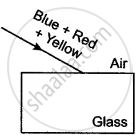Advertisements
Advertisements
Question
Describe how you could demonstrate that white light is composed of a number of colours.
Solution
 We can show that white light is composed of a number of colours by passing it through a transparent glass prism. A glass prism is a triangular refracting surface. When a beam of white light enters the prism, the light splits, forming a band of seven colours on a screen placed on the other side of the prism. This splitting of light into its constituent colours is called dispersion of light. The formation of seven colours in a spectrum shows that white light is composed of these seven colours, namely, red, orange, yellow, green, blue, indigo and violet.
We can show that white light is composed of a number of colours by passing it through a transparent glass prism. A glass prism is a triangular refracting surface. When a beam of white light enters the prism, the light splits, forming a band of seven colours on a screen placed on the other side of the prism. This splitting of light into its constituent colours is called dispersion of light. The formation of seven colours in a spectrum shows that white light is composed of these seven colours, namely, red, orange, yellow, green, blue, indigo and violet.
APPEARS IN
RELATED QUESTIONS
In the following diagram the correctly marked angles are :
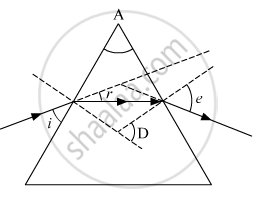
(a) ∠A and ∠e
(b) ∠i, ∠A and ∠D
(c) ∠A ∠r and ∠e
(b) ∠A ∠r and ∠D
Study the following ray diagram:
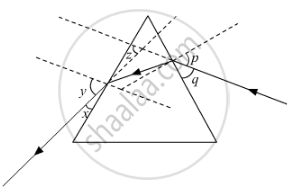
In this diagram, the angle of incidence, the angle of emergence and the angle of deviation respectively have been represented by
(A) y, p, z
(B) x, q, z
(C) p, y, z
(D) p, z, y
When a beam of white light is passed through a prism, it splits to form lights of seven colours. Is it possible to recombine the lights of seven colours to obtain the white light again? Explain your answer.
Define the term dispersion of light.
The diagram below shows the path taken by a narrow beam of yellow monochromatic light passing through an equiangular glass prism. If the yellow light is replaced by a narrow beam of white light incident at the same angle, draw another diagram to show the passage of white light through the prism and label it to show the effect of prism on the white light.
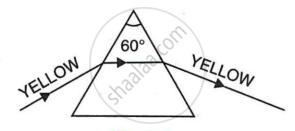
While performing the experiment to trace the path of a ray of light passing through a glass prism, four students marked the incident ray and the emergent ray in their diagrams in the manner shown below. 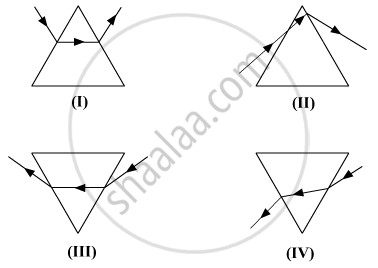
(A) I
(B) II
(C) III
(D) IV
An object is placed in front of a converging lens and in front of a diverging lens as in fig.

(a)Complete the ray diagram to obtain an image.
(b)Compare the nature of image formed by both the lenses in the above case.
State two uses of ultraviolet radiation.
In the figure, a beam of light consisting of three colours blue, red, and yellow is incident on a prism and on a rectangular glass block respectively. Complete the diagram by drawings of the refracted and emergent rays.
